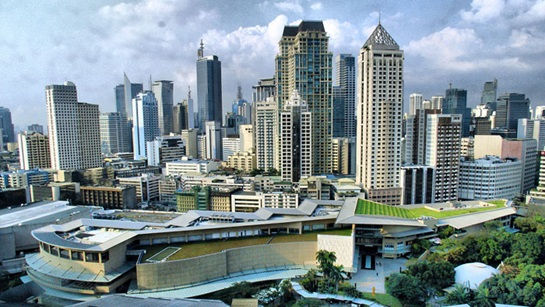Philippine general insurance set for rapid market expansion
- Daniel Doctora
- Jul 28, 2025
- 3 min read
Updated: Jul 30, 2025
Climate risks and tech spark transformation

The general insurance sector in the Philippines is projected to see significant growth over the next four years, with gross written premiums (GWP) expected to reach PHP229.7 billion ($3.9 billion) by 2029, according to research from GlobalData.
The report anticipates a compound annual growth rate (CAGR) of 10.6% from PHP153.8 billion ($2.7 billion) in 2025.
Market expansion driven by disaster risk and digital adoption
GlobalData’s analysis attributes this upward trend to several factors, including the country’s exposure to frequent natural disasters, the increasing use of digital platforms for insurance distribution, and the introduction of parametric insurance products that offer rapid claims processing.
These developments are making insurance products more accessible and responsive to the needs of both individuals and businesses.
Penetration remains low, but growth opportunities emerge
Despite these positive trends, insurance penetration in the Philippines remains below 1.9%.
This leaves considerable room for expansion, particularly as government programs to improve disaster resilience, greater awareness of insurance products among lower-income groups, and the growing popularity of microinsurance are expected to drive further uptake.
Property insurance is forecast to remain the dominant business line, accounting for nearly 40% of general insurance GWP in 2025.
The Philippines’ vulnerability to typhoons and other severe weather events has led to the adoption of parametric insurance, which provides payouts based on predefined triggers.
According to the World Risk Index, the country’s catastrophe protection gap is currently at 98%, much higher than the global average of 58%.
Sahoo highlighted that property insurance is also benefitting from efforts to expand agricultural coverage and improve claims efficiency.
“The Philippine Crop Insurance Corporation (PCIC) is collaborating with local governments to implement satellite mapping technology to expedite claims processing, further boosting consumer confidence and supporting the growth of the property insurance sector,” he said.
Motor, marine, and specialty lines show steady progress
Motor insurance is projected to be the second-largest segment, making up 23.5% of general insurance GWP in 2025. The segment is expected to grow at a CAGR of 7.3% through 2029.
Regulatory proposals to increase coverage for private car passengers may lead to higher premiums, while incentives for electric vehicle adoption are prompting insurers to adjust policy offerings.
Marine, aviation, and transit insurance are anticipated to comprise 7.9% of the market in 2025, supported by increased trade activity.
The Philippine Statistics Authority reported a 5.7% rise in exports and an 8.4% increase in imports during the first quarter of 2025 (Q1 2025).
Infrastructure investments are also expected to drive growth in cargo and passenger volumes.
Other general insurance lines, including financial, liability, and miscellaneous products, are estimated to account for the remaining 29.2% of GWP.
Outlook and sector challenges
Looking ahead, Sahoo said the general insurance market is likely to maintain its growth momentum through 2029, with climate-related events and the expansion of microinsurance products expected to further increase penetration.
As the sector evolves, efforts to improve accessibility and inclusivity will be key to narrowing the protection gap.
However, Sahoo also noted that natural catastrophe losses and potential changes in international trade tariffs could impact insurer profitability in the coming years.
Philippine insurance industry records growth in early 2025
The Philippine insurance market reported gains across several performance indicators in the first quarter of 2025, according to preliminary data from the Insurance Commission (IC).
Insurance penetration reached 1.89% of gross domestic product (GDP) as of March 31, 2025, up from 1.78% a year earlier.
Insurance density, measured as premium per capita, rose by 13.4% to PHP1,094.94.
Commissioner Reynaldo Regalado attributed the improved penetration rate to a stronger increase in premium income relative to the country’s 7.8% nominal GDP growth.
He also noted that the rise in insurance density was driven by premium growth outpacing the 0.87% rise in population during the period.
Non-life segment posts asset and premium gains
Non-life insurers reported total assets of PHP381.66 billion, up 4.88% year-on-year.
Invested assets grew by nearly 5% to PHP187.29 billion, with held-to-maturity investments rising by 18.88%.
These, along with time deposits and available-for-sale assets, represented over 71% of the sector’s investment portfolio.
Net premiums written in the non-life segment increased by 19.35% to PHP20.27 billion.
Motor car insurance remained the largest contributor at PHP7.97 billion, while fire insurance premiums rose 21.91% to PHP3.81 billion.
The non-life sector’s net income climbed 14.63% to PHP2.89 billion, supported by higher premium volumes and improved underwriting results.
Source: insurancebusinessmag.com




Comments